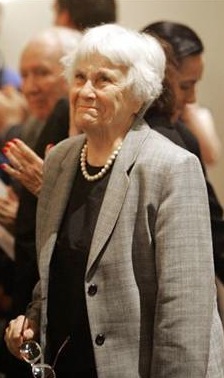 Charles Shields’ biography of Harper Lee is baffling because Harper Lee refused to play the game, except she did play the game for a few innings in the early 60s when her famous novel came out and it was made into a movie with Gregory Peck.
Charles Shields’ biography of Harper Lee is baffling because Harper Lee refused to play the game, except she did play the game for a few innings in the early 60s when her famous novel came out and it was made into a movie with Gregory Peck.
I just finished Charles Shields’ biography, Mockingbird: A Portrait of Harper Lee
, and have to say it was a delightful read.
, and have to say it was a delightful read.
Fans and historians and generally interested folks somehow sense they deserve to know more about Harper Lee. Most authors oblige fans in all sorts of ways. Lee didn’t and doesn’t and that’s OK by me, but it makes the whole story of her life a bit baffling. Anyone who studies the life of another asks the why question, and the one whose story is being told often answers the questions or leaves clues.
But Harper Lee’s what I’d call a Monument not Built. Famous authors, and she’s surely one, often become monuments of fame and attention. This happens because said authors let it happen and encourage it to happen. Lee chose another way. Just when fame was about to go out of control, she knocked it down to size. She was in that game for awhile and then she became a private person and that’s all there’s to it. She evidently likes to read and write and drink coffee, and to do those things by herself.
There are some basic facts. She grew up in Monroeville, Alabama. Her father was one of the centers of this Southern town, a lawyer, owned the newspaper, and had a wife who struggled with mental health. One of his daughters, Alice, was called “Atticus with a skirt” by Harper Lee. One of their next door neighbors, at least some of the time and for parts of years, was none other than Truman Capote. Nelle and Truman were best of friends, and Truman took credit for encouraging Nelle to become a reader and writer.
For all her efforts, Harper Lee was anything but normal – she was very bright and independent and thought for herself and often to herself and by herself. Her high school English teacher, along with Alice, were her biggest life-influencers — that is outside her father. She never married.
She went to Univ of Alabama Law school but stopped shy of graduation because she wanted to go to NY to write … and she did. Her father wasn’t happy. But a friendly family there, in a stroke of what now seems like historical luck, decided to support her for one year so she could write. Which she did … but she, like all authors, needed wisdom from editors and her agent and friends as she learned the art of fiction writing. Her first novel, To Kill a Mockingbird: 50th Anniversary Edition , was her only novel. It changed America. It is likely the only Monument she’ll permit. Good for her, I say.
, was her only novel. It changed America. It is likely the only Monument she’ll permit. Good for her, I say.
She tried her hand at another novel but the story goes that someone broke into her home and stole it and she didn’t have the heart to start all over. She evidently began research later on another, but it didn’t make it into print either. We can probably all speculate whether there are some more manuscripts sitting in her home and when she passes on we’ll hear about them … and we can speculate all we want. But I’d have to say if she wanted them in print they’d be in print. Since they aren’t in print, she doesn’t want them there. Good for her, I say.
She helped Truman Capote, a weird dude if ever there was one, write In Cold Blood, and didn’t get credit for her part because Capote stiffed her. She lived in both NYC and in Monroeville, where she lives the way she chooses to live: involved but unnoticed, independent, and leaving would-be historians and interviewers baffled. We’re told she can be seen in Monroeville, but the locals protect her in uncanny ways. The way she’d want it and the way it ought to be.
Shields tells a good story; I’d have liked to hear more about her golf game. She evidently played often.
Ms. Harper Lee, if you ever hear about this little review, I want you to know that I like the Monument you did build and I also like the Monument Not Built. Good for you.

